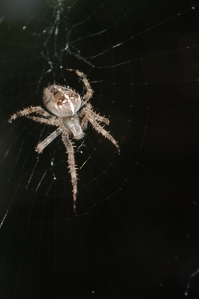What could or should you put in a lesson plan? This is a huge question as so much depends on variables such as the age of the children, whether the lesson is held in a nursery or as an adult/child session, the personalities and abilities of the children concerned, what you’re looking to achieve from the classes, what your client base expects to get from the classes, how long your session is and so on. There is a lot to consider but here are some activities I try to include in a typical session for a group of mobile toddlers from around 18 months to 2 1/2 years old.
1. A Hello Song
 I always start with the same song each session singing hello to the children. It establishes a framework of familiarity for the children – once they hear the beginning song they know it’s time for music class.
I always start with the same song each session singing hello to the children. It establishes a framework of familiarity for the children – once they hear the beginning song they know it’s time for music class.
It doesn’t have to be anything complicated. Singing hello based on a so-mi (5th and 3rd notes of a scale) interval works very well e.g. “Hel-lo So-phie” which would be sung on so-mi so-mi pitches.
2. A Warm-up Song
Something to get everyone involved and interacting is always a good beginning to a class and a gross motor movement song is ideal. Large movements that young children can do such as clapping hands, stamping feet, jumping, marching, tapping on knees or feet on the beat encourage a sense of pulse which is the foundation for musical learning. I use the same warm up song for around 5-6 weeks – the repetition is important for children to learn the song but you need to avoid staleness and boredom so change it when necessary.
3. Finger Plays
As a contrast to gross motor movement and lively songs a simple finger play such as 5 Little Ducks or Tommy Thumb focus the children’s attention and engage fine motor movements. Many also have the benefit of introducing counting and numeracy skills.
4. Peekaboo or Peepo Songs
I love these songs as they are so interactive, both between adult and child and between the children themselves. I use peekaboo songs in all my sessions from babies up to school age, either using chiffon scarves, the parachute or stretchy lycra.
5. Knee Bouncers
Most children love knee bouncers. Helpful for establishing pulse, you can also bounce showing changes of tempo, demonstrate pitch by lifting up high and dropping down low and they’re great fun too.
6. Quiet Listening
Taking the time to listen carefully, either to music or to everyday sounds is so valuable and I’ve written about this previously here and here. I like to play on a variety of instruments in my sessions but mostly use my flute for quiet listening time. I use simple contrasting tunes e.g. loud/quiet or fast/slow and try to encourage the children to respond in their own way to the changes. At one of the early years settings I work in the children have taken to spontaneously dancing when the music is lively and then lying down when it is calm – all without any specific direction from me.
As well as live music we listen to every day sounds and match their sounds to flashcards and pictures. One particularly effective activity has been to use a ticking clock followed by Big Ben chimes which we count. You can see the intense concentration by the children and almost hear a pin drop between the bell strikes.
6. Circle Songs, Group and Co-operative Play
 Using the whole body to dance, march, jump or tiptoe to the music helps develop a sense of pulse and can help to improve co-ordination and body awareness. Sometimes we might just dance round in a circle, other times I’ll introduce the giant dance scrunchie or the parachute and use these. Using the parachute, scrunchie, balls, hoops and lycra mean the children need to work together as a cohesive unit and encourages social co-operation. These props also enable you to demonstrate musical elements through large-scale body movements and activities.
Using the whole body to dance, march, jump or tiptoe to the music helps develop a sense of pulse and can help to improve co-ordination and body awareness. Sometimes we might just dance round in a circle, other times I’ll introduce the giant dance scrunchie or the parachute and use these. Using the parachute, scrunchie, balls, hoops and lycra mean the children need to work together as a cohesive unit and encourages social co-operation. These props also enable you to demonstrate musical elements through large-scale body movements and activities.
7. Using Percussion Instruments
Using percussion instruments reinforces aspects of musicality developed through singing and body movement. In this section I use percussion instruments to demonstrate pulse, rhythm, dynamics, tempo, pitch and timbre.
9. Cool Down, Relax and then Good-bye
After a lively session it’s nice to settle down, relax and have a calming time. You can do this in many ways from quiet listening to gentle music while bubbles float by, or singing a lullaby, or singing a quiet interactive song. After this my sessions end with a familiar good-bye song so that the children know the session is over and it’s time to go.
As an example I’ve uploaded a sample lesson plan for a group of 2-3 year olds. Not all the activities are included – it’s only a 30 minute lesson as was conducted in a nursery group.
Pre-school Music Lesson Plan Example





